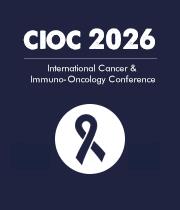Title : Advanced dosimetric modeling of ¹²⁵I balloon brachytherapy for GBM treatment: A comparative study using MCNP
Abstract:
Background: Iodine-125 balloon brachytherapy is an innovative technique for delivering localized low-dose-rate radiation after the surgical removal of malignant brain tumors. The spherical shape of post-resection cavities makes the balloon applicator an effective choice for achieving conformal and isotropic dose distribution. This study conducts a comparative dosimetric analysis of two Monte Carlo simulation models for ¹²?I-filled balloon brachytherapy systems, aiming to enhance clinical applications in neuro-oncology.
Methods: In this study, our dosimetry modelling involved a 3.8 cm spherical balloon filled with aqueous 125I at a water-equivalent homogeneous phantom, which simulated by MCNPX 2.6 code. Photon energy deposition was assessed using F5 and F6 tallies across high-resolution radial increments (0.1 mm to 5 cm). Results were compared to a conventional fixed-seed brachytherapy geometry.
The study of Yun Yang, Mark J. Rivard utilized MCNP6 and TG-43 formalism to model GliaSite balloon applicators ranging from 10 to 40 mm in diameter in water and brain tissue.
Sampling was performed using 10? photon histories, for calculating of angular and radial dose distribution.
Results: Both studies confirmed the feasibility of ¹²?I liquid-filled balloon brachytherapy in achieving near-isotropic and conformal dose distributions. However, dose rates at 1 mm from the balloon surface varied significantly: MCNPX model: 0.001858 Gy/mCi•h; MCNP6/TG-43 model: ~0.0020 Gy/mCi•h. This indicates a 7.1% lower dose rate in the MCNPX simulation, attributed to differences in source modeling (volumetric vs. point-source), phantom material (homogeneous water vs. brain-equivalent media), and normalization methods. The TG-43 model reported total dosimetric uncertainty below 1%, while the MCNPX model showed less than 4% dose variation near the balloon surface, validated by TLD benchmarking.
Conclusion: This comparative analysis underscores the clinical potential of ¹²?I balloon brachytherapy and emphasizes the influence of modeling assumptions on dose rate predictions. Integrating TG-43-based dosimetry with anatomically accurate Monte Carlo modeling may enhance treatment planning precision. It is recommended to harmonize simulation approaches to improve reproducibility and consistency in clinical applications.
Keywords: Iodine-125, balloon brachytherapy, MCNP, TG-43, glioblastoma, dose rate, Monte Carlo simulation.



